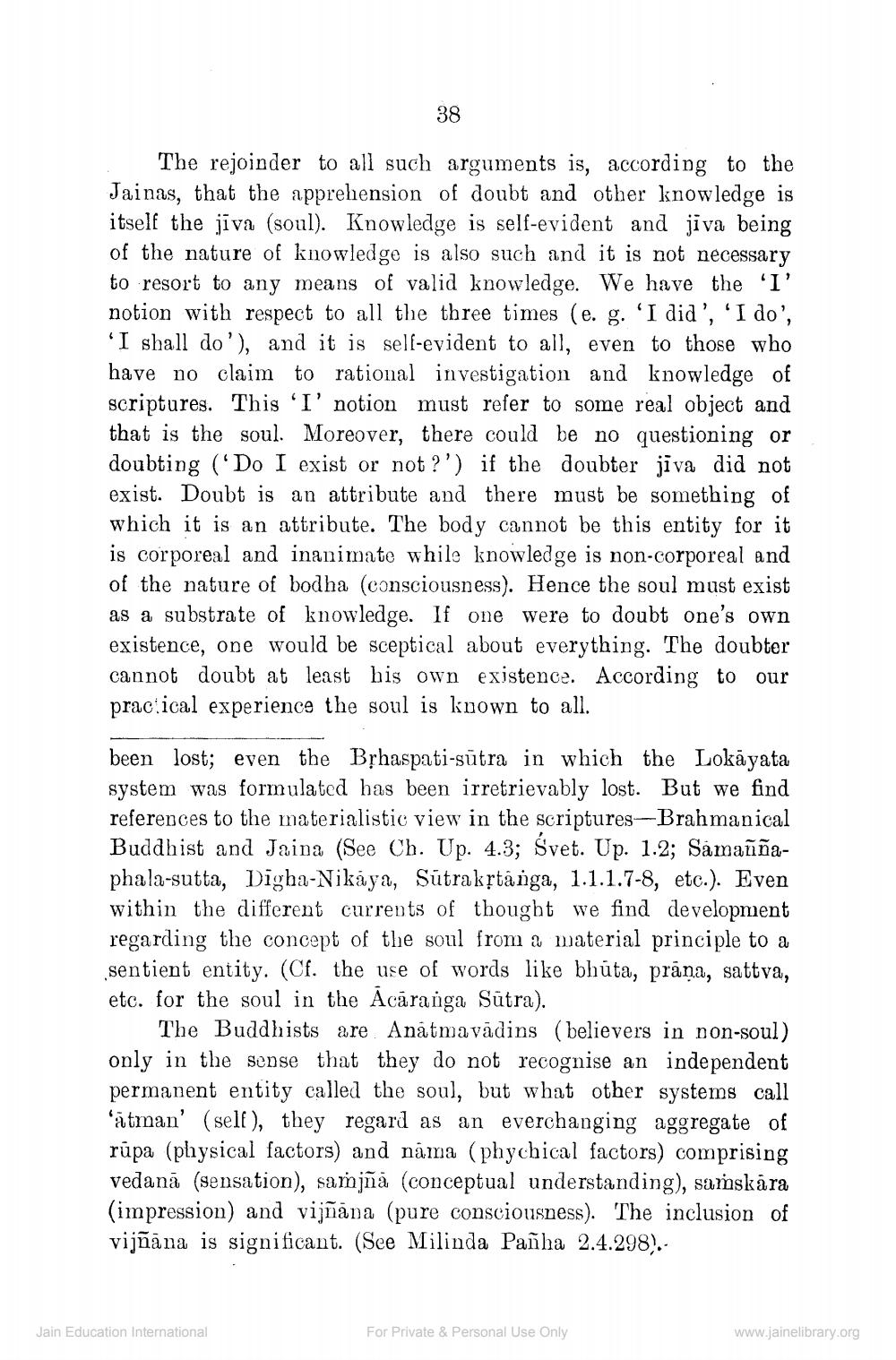________________
38
The rejoinder to all such arguments is, according to the Jainas, that the apprehension of doubt and other knowledge is itself the jīva (soul). Knowledge is self-evident and jiva being of the nature of knowledge is also such and it is not necessary to resort to any means of valid knowledge. We have the 'I' notion with respect to all the three times (e. g. I did', 'I do', 'I shall do'), and it is self-evident to all, even to those who have no claim to rational investigation and knowledge of scriptures. This 'I' notion must refer to some real object and that is the soul. Moreover, there could be no questioning or doubting (“Do I exist or not?') if the doubter jiva did not exist. Doubt is an attribute and there must be something of which it is an attribute. The body cannot be this entity for it is corporeal and inanimate while knowledge is non-corporeal and of the nature of bodha (consciousness). Hence the soul must exist as a substrate of knowledge. If one were to doubt one's own existence, one would be sceptical about everything. The doubter cannot doubt at least his own existence. According to our prac ical experience the soul is known to all.
been lost; even the Bphaspati-sūtra in which the Lokāyata system was formulated has been irretrievably lost. But we find references to the materialistic view in the scriptures--Brahmanical Buddhist and Jaina (See Ch. Up. 4.3; Svet. Up. 1.2; Samannaphala-sutta, Dīgha-Nikaya, Sūtrakṣta nga, 1.1.1.7-8, etc.). Even within the different currents of thought we find development regarding the concept of the soul from a material principle to a sentient entity. (Cf. the use of words like bhūta, prāna, sattva, etc. for the soul in the Acāranga Sūtra).
The Buddhists are Anātmavādins (believers in non-soul) only in the sense that they do not recognise an independent permanent entity called the soul, but what other systems call 'atman' (self), they regard as an everchanging aggregate of rūpa (plıysical factors) and nama (phychical factors) comprising vedanā (sensation), samjñā (conceptual understanding), samskära (impression) and vijñāna (pure consciousness). The inclusion of vijñāna is significant. (See Milinda Pañha 2.4.298)..
Jain Education International
For Private & Personal Use Only
www.jainelibrary.org




